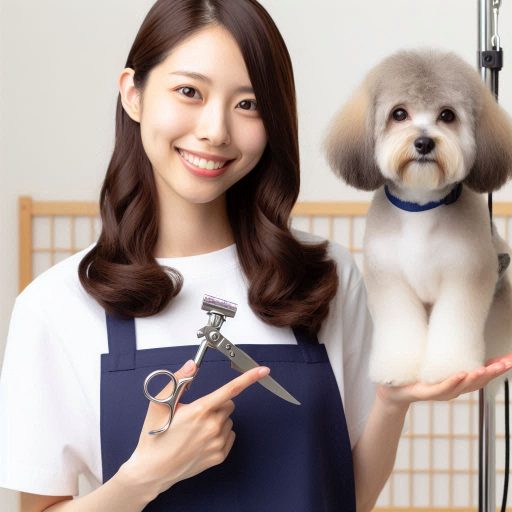Introduction
Pet grooming allergies are common among pet owners and groomers.
Many people experience allergic reactions when exposed to pet dander, saliva, or grooming products.
Allergies can range from mild to severe reactions, impacting daily life.
Symptoms may include sneezing, itching, and even respiratory issues.
Understanding these allergies is vital for everyone involved.
Both pets and their owners deserve a safe grooming experience.
It is important to know how to deal with these allergies to ensure the well-being of both the pet and the person grooming them.
Recognizing the specific allergens is the first step in managing pet grooming allergies.
Common allergens include pet dander, grooming products, and environmental triggers like dust.
Keep a diary of symptoms to pinpoint triggers effectively.
This record will help you identify which allergens to avoid during grooming.
Taking preventive measures can significantly reduce allergy symptoms.
Use hypoallergenic grooming products designed for sensitive skin.
Regularly bathe and brush your pet to minimize dander buildup.
Additionally, consider using air purifiers to reduce airborne allergens in your home.
If allergies persist, consulting a healthcare professional is essential.
An allergist can perform tests to determine specific allergies and recommend appropriate treatments.
They may suggest antihistamines or other medications to alleviate symptoms.
A professional can also guide safe grooming practices to protect both the pet and groomer.
Employing proper grooming techniques can help manage allergies.
Transform Your Career Today
Unlock a personalized career strategy that drives real results. Get tailored advice and a roadmap designed just for you.
Start NowUse tools designed to minimize shedding and dander.
Groom your pet in a well-ventilated area to reduce exposure to allergens.
Wearing protective gear, like masks and gloves, can further safeguard against allergic reactions.
Managing pet grooming allergies requires awareness and proactive measures.
By understanding allergens, employing preventive strategies, and seeking professional advice, you can create a comfortable grooming environment.
Your pet deserves care, and you deserve comfort while providing it.
Understand Common Allergens
Understanding common allergens in pet grooming is essential for pet owners.
Many grooming products contain ingredients that may trigger allergic reactions.
Here, we will identify these allergens and discuss their impact.
Identify Common Allergens Found in Pet Grooming Products
Many grooming products, such as shampoos, conditioners, and sprays, contain fragrances and preservatives.
These chemicals often lead to skin irritations and allergic reactions in pets and humans.
Look for products labeled as hypoallergenic, which typically contain fewer allergens.
Always read the ingredient list before purchasing grooming supplies.
Some ingredients may cause allergies despite being natural, so it‘s crucial to know what you are using.
Be Aware of Allergens Such as Dander, Saliva, and Fur
Pet dander, saliva, and fur are significant allergens for many individuals.
Dander consists of tiny flakes from the skin that can become airborne.
Pet saliva can also cause allergic reactions when it dries on surfaces.
Additionally, fur can trap allergens like pollen and dust.
Regular grooming helps reduce the amount of fur and dander in your home, minimizing exposure.
Showcase Your Business Today
Reach thousands of readers actively exploring professional services. Publish your business profile and grow your audience now.
Publish NowKnowing the Allergens Can Help in Taking Necessary Precautions
Being aware of these allergens allows you to take proactive steps to manage allergies.
Consider grooming your pet outdoors or in a well-ventilated area.
Use air purifiers to reduce airborne allergens in your home.
When choosing grooming products, prioritize those designed for sensitive skin and hypoallergenic formulations.
If you notice persistent allergic reactions, consult your veterinarian for advice.
They may recommend specific products or treatments tailored to your pet‘s needs.
By understanding common allergens in pet grooming, you can create a safer environment for both you and your furry friend.
Implementing these strategies will help reduce allergy symptoms and improve your quality of life.
Read: Creating a Comfortable Atmosphere in Your Nail Salon
Use Hypoallergenic Products
Opt for hypoallergenic grooming products to reduce allergic reactions
Dealing with pet grooming allergies can be challenging.
Using hypoallergenic products can significantly reduce allergic reactions for both pets and owners.
These products are specially formulated to minimize allergens and provide a gentle grooming experience.
Look for products that are specifically designed for sensitive skin
Start by opting for hypoallergenic grooming products.
Many brands now offer shampoos, conditioners, and wipes specifically designed to be allergy-friendly.
These products contain fewer irritants and allergens, making them suitable for sensitive pets and humans alike.
When choosing grooming products, look for those designed for sensitive skin.
These products often feature natural ingredients, which help soothe and protect your pet‘s skin.
They also promote a healthier coat without causing irritation.
Reading product labels can help you identify which options are best for your pet‘s needs.
Avoid products with harsh chemicals that can trigger allergies
Avoid products with harsh chemicals that can trigger allergies.
Many conventional grooming products contain sulfates, parabens, and artificial fragrances.
These ingredients can irritate sensitive skin and lead to allergic reactions.
Instead, choose natural or organic products that are free from these harmful chemicals.
Additionally, consider your pet’s grooming frequency.
Regular grooming with hypoallergenic products can help maintain a clean coat and reduce allergens.
It can also prevent matting and tangling, which can irritate your pet’s skin.
Always test new products on a small area of your pet‘s skin before full application.
Monitor for any adverse reactions, such as redness or itching.
If you notice any issues, discontinue use immediately.
In short, using hypoallergenic products is an effective way to manage pet grooming allergies.
By opting for gentle, natural ingredients, you can ensure a more comfortable grooming experience for your pet and reduce allergy-related discomfort for yourself.
Read: Pet Grooming Techniques for Different Breeds
Wear Protective Gear
Wear gloves, masks, and goggles while grooming to protect yourself from allergens
Grooming pets can expose you to various allergens, triggering allergic reactions.
To protect yourself, wearing the right gear is essential. Begin by wearing gloves while grooming.
This simple step prevents allergens from coming into direct contact with your skin.
Choose gloves that fit well and are durable enough for grooming tasks.
Additionally, consider wearing a mask.
A mask helps filter out pet dander, dust, and other allergens.
It reduces your exposure to airborne irritants while grooming.
Look for masks with good filtration capabilities for maximum protection.
Showcase Your Business Today
Reach thousands of readers actively exploring professional services. Publish your business profile and grow your audience now.
Publish NowGoggles are also vital when grooming pets.
They shield your eyes from allergens and irritants, reducing the risk of allergic reactions.
Wearing goggles prevents itching and redness, allowing you to groom comfortably.
Cover your skin to prevent direct contact with allergens
Covering your skin is another effective strategy.
Wear long sleeves and pants to minimize direct contact with allergens.
Choose breathable fabrics that offer comfort during grooming sessions.
This clothing barrier helps reduce the likelihood of skin irritation.
Proper protective gear can minimize allergic reactions
Proper protective gear can significantly minimize allergic reactions.
It creates a barrier between you and potential allergens, allowing you to groom your pet safely.
Always check your gear before starting a grooming session.
After grooming, remove and wash your protective gear promptly.
This helps eliminate any allergens that may have accumulated.
Regularly cleaning your grooming area can further reduce allergens in your environment.
If you have severe allergies, consult with an allergist for tailored advice.
They may suggest additional precautions or treatments.
Prioritizing your safety while grooming ensures a positive experience for both you and your pet.
By wearing protective gear, you can enjoy grooming without worrying about allergic reactions.
Read: How to Transition from Part-Time to Full-Taime Nail Tech

Maintain Good Hygiene
Maintaining good hygiene is essential for managing pet grooming allergies.
Simple practices can significantly reduce allergen exposure.
Wash Your Hands After Grooming
Always wash your hands thoroughly after grooming your pet.
This action removes allergens that may linger on your skin.
Use soap and warm water for at least 20 seconds.
If soap and water aren‘t available, use an alcohol-based hand sanitizer.
This habit helps prevent allergens from spreading to your face or other surfaces.
Clean Grooming Tools Regularly
Regularly cleaning grooming tools is crucial for allergy management.
Allergens can accumulate on brushes, combs, and scissors over time.
Rinse brushes and combs with warm, soapy water after each grooming session.
Use a disinfectant spray to clean scissors and clippers regularly.
Store tools in a clean, dry area to minimize dust and allergens.
By keeping your tools clean, you limit the chances of allergen exposure during grooming sessions.
Good Hygiene Practices Can Help in Reducing Allergic Reactions
Implementing good hygiene practices can significantly reduce allergic reactions.
Allergens, such as dander and fur, can irritate sensitive individuals.
By washing your hands and cleaning tools frequently, you lower the risk of exposure.
Maintain a clean grooming environment by vacuuming and dusting regularly.
Use an air purifier to filter airborne allergens, improving overall air quality.
In summary, maintaining good hygiene is vital for managing pet grooming allergies.
Washing your hands, cleaning grooming tools, and following hygiene practices help minimize allergens.
These steps contribute to a healthier grooming experience for both you and your pet.
Stay proactive about hygiene to reduce allergic reactions effectively.
Showcase Your Business Today
Reach thousands of readers actively exploring professional services. Publish your business profile and grow your audience now.
Publish NowRead: Importance of Continuous Education in Nail Technology
Consider Allergy Testing
When dealing with pet grooming allergies, it is essential to consider allergy testing to identify specific triggers that may be causing your symptoms.
Importance of Allergy Testing‘
Allergy testing can help pinpoint the exact allergens that are causing your reactions, whether it be pet dander, saliva, or urine.‘
By knowing your specific triggers, you can take proactive steps to minimize exposure and reduce the severity of your symptoms.
Types of Allergy Testing‘
There are various methods for allergy testing, including skin prick tests, blood tests, patch tests, and elimination diets.‘
Consulting a healthcare professional specialized in allergies will help determine the most appropriate testing method for your situation.
Benefits of Allergy Testing‘
Understanding your allergies through testing can lead to better management strategies, such as avoiding certain grooming products or grooming your pet in a well-ventilated area.‘
It can also help in identifying if you are allergic to other environmental factors that may exacerbate your pet grooming allergies.
How to Prepare for Allergy Testing‘
Prior to allergy testing, it is important to discuss any medications you are taking with your healthcare provider, as some medications may interfere with test results.‘
Wearing loose-fitting clothing and avoiding perfumes or scented lotions on the day of testing can also help ensure accurate results.
Follow-Up after Allergy Testing‘
After receiving your allergy test results, your healthcare provider will work with you to develop a personalized plan for managing your pet grooming allergies.‘
This plan may include lifestyle changes, medication, or immunotherapy to desensitize you to specific allergens over time.
Overall, allergy testing is a crucial step in effectively managing pet grooming allergies and improving your quality of life.
By knowing your triggers and working with healthcare professionals, you can find relief and enjoy your furry companions without constant discomfort.
Seek Professional Help
If allergies persist, consider seeking help from a dermatologist or allergist
If pet grooming allergies persist despite your best efforts, seek help from a professional.
Dermatologists and allergists specialize in skin and allergy-related issues.
They have the knowledge and experience to diagnose specific allergies accurately.
Professionals can provide guidance on managing allergies
During your visit, the professional will evaluate your symptoms and medical history.
This assessment helps them identify potential allergens causing your reactions.
They may conduct skin tests or blood tests to pinpoint the exact source of your allergies.
Once they determine the cause, professionals can provide effective guidance on managing your allergies.
They may suggest lifestyle changes or avoidance strategies tailored to your specific needs.
For example, they might recommend grooming your pet outdoors or using specific grooming products that are hypoallergenic.
They can prescribe medication or recommend treatment options
Additionally, allergists can prescribe medication to alleviate your symptoms.
Antihistamines can reduce sneezing, itching, and other allergic reactions.
In some cases, they might recommend corticosteroids to manage inflammation and severe reactions.
In more persistent cases, immunotherapy may be an option.
This treatment gradually desensitizes your immune system to allergens.
It involves receiving small doses of the allergen over time to build tolerance.
Seeking professional help not only addresses immediate symptoms but also offers long-term solutions.
By working with an expert, you can create a comprehensive management plan.
This plan ensures you enjoy your pet without constant discomfort.
Remember, professional help is essential when managing pet grooming allergies. Your health and comfort should always come first.
Taking this step can significantly improve your quality of life. Consult a dermatologist or allergist today for a healthier tomorrow.
Take Breaks
Grooming pets can be a rewarding experience, but it can also trigger allergies.
To manage this, take regular breaks during grooming sessions.
This strategy helps your body recover and reduces allergy symptoms.
Take breaks between grooming sessions to allow your body to rest
First, take breaks between grooming sessions to allow your body to rest.
Extended periods of grooming can lead to fatigue, making it harder to manage your allergies.
During these breaks, step away from the grooming area and give yourself a moment to breathe.
Showcase Your Business Today
Reach thousands of readers actively exploring professional services. Publish your business profile and grow your audience now.
Publish NowThis short distance can help alleviate symptoms and prevent discomfort.
Give yourself time to recover from any allergic reactions
Next, use breaks to give yourself time to recover from any allergic reactions.
If you experience symptoms like sneezing or itching, step outside for fresh air.
This simple action can clear your airways and reduce irritation.
Drinking water during breaks also helps.
Hydration can minimize dryness in your throat and nose, which often worsens allergy symptoms.
Avoid overexertion to prevent worsening of allergies
Moreover, avoid overexertion to prevent worsening of allergies.
Pushing yourself too hard during grooming can intensify reactions.
Pay attention to how your body feels.
If you start to feel overwhelmed, it‘s a sign to take a longer break.
This helps ensure you remain comfortable and safe while grooming.
Lastly, consider scheduling grooming sessions thoughtfully.
Plan shorter sessions with more frequent breaks.
This approach allows you to manage your allergies effectively.
By prioritizing your well-being, you can continue to enjoy pet grooming without compromising your health.
All in all, taking breaks is vital for managing pet grooming allergies.
It helps you rest, recover from reactions, and avoid overexertion.
Implementing these strategies will make grooming a more enjoyable experience for you and your pet.
Gain More Insights: Bank Teller Work Environment Overview
Conclusion
Dealing with pet grooming allergies can be challenging, but there are steps you can take to manage them effectively.
Identify the common allergens present in pet grooming products and pet dander to avoid exposure.
Opt for hypoallergenic grooming products that are gentle on the skin and less likely to trigger allergies.
Protect yourself by wearing gloves, masks, and goggles to minimize direct contact with allergens.
Wash your hands and clothing thoroughly after grooming pets to remove any allergens.
Consult an allergist to determine specific allergens causing reactions and develop a tailored management plan.
If allergies persist, seek advice from a veterinarian or allergist for proper diagnosis and treatment.
Take regular breaks during pet grooming sessions to prevent overexposure to allergens and reduce symptoms.
Dealing with pet grooming allergies requires awareness and preventive measures.
By understanding common allergens, using hypoallergenic products, wearing protective gear, maintaining good hygiene, considering allergy testing, seeking professional help, and taking breaks, you can effectively manage allergies.
Remember that your health and well-being are paramount when it comes to pet grooming.
[E-Books for Sale]
The Big Book of 500 High-Paying Jobs in America: Unlock Your Earning Potential
$19.99 • 500 High-Paying Jobs • 330 pages
Explore 500 high-paying jobs in America and learn how to boost your career, earn more, and achieve success!
See All 500 High-Paying Jobs of this E-Book
1001 Professions Without a Degree: High-Paying American Jobs You Can Start Now
$19.99 • 1001 Professions Without a Degree • 174 pages
Discover 1001 high-paying jobs without a degree! Unlock career tips, skills, and success strategies for just $19.99!




